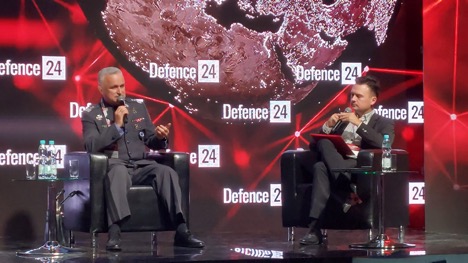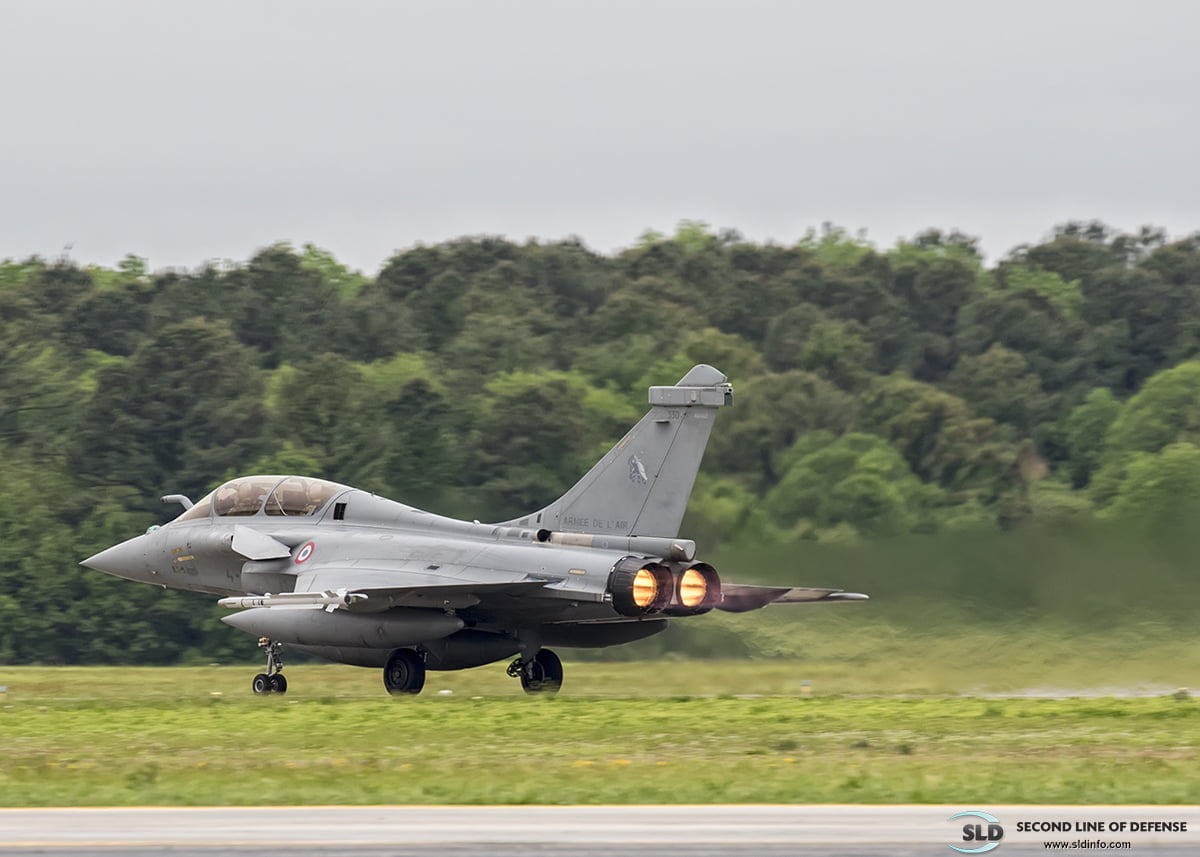By Pierre Tran
Paris – Arquus, a French builder of light and medium armored vehicles, has set a high priority on winning export deals in 2022, after the COVID pandemic slashed foreign orders last year, executive chairman Emmanuel Levacher said Feb. 16.
Foreign deals accounted for some 10 percent of orders last year, with domestic contracts making up 90 percent, he told the annual news conference.
“2021 was a difficult year for orders,” he said, with foreign orders failing to hit targets.
On the domestic front, France was expected to launch in March or April a competition for some 9,400 army trucks, worth some €3 billion ($3.4 billion), which was expected to attract fierce foreign competition.
Arquus has partnered with Soframe, a unit of the Lohr company, to pitch in that tender, which will include fuel trucks.
Arquus, a unit of Swedish truck maker Volvo, won orders worth some €68 million from overseas clients, Levacher said. Most of those foreign orders came from five or six nations in the Middle East and Africa.
The COVID crisis hit export orders as there were restrictions on overseas travel and sparse attendance of trade shows, notably DSEI in London and IDEX in Abu Dhabi, he said. Meanwhile, there was strong foreign competition, particularly from Turkey, which “pushed its geopolitical advantage.”
The return of trade shows, including the French Eurosatory land weapons exhibition, was expected to help business.
Europe as Target Market
Arquus was now focusing on export deals in Europe, where markets were more open and accessible, he said, and was seeking to cut dependence on the Middle East and Africa. The company was pitching its Sherpa four-wheel drive light armored vehicle in a competition in Romania and was competing in a Greek competition for military trucks. There were also tenders in Estonia and Sweden.
Sales to European forces were also seen to be more acceptable in public opinion, as there were allegations of human rights abuse in some Middle Eastern nations.
More generally, there was something of a “schizophrenia” in the European Union, which is setting up its European Defense Fund (EDF) in the pursuit of greater sovereignty and autonomy, while the EU was also considering a formal adoption of social responsibility concerns on the arms industry in Europe, Levacher said.
Such a recognition of social responsibility was “extremely dangerous,” as that would deter banks and investors from making funds available for arms companies.
As part of its European drive, Arquus was among 18 companies from some 10 partner nations taking part in two EDF research projects, dubbed FAMOUS 1 and 2, he said.
That acronym refers to the European Future Highly Mobile Augmented Armored Systems project, backed by a budget of €9.92 million, of which €9 million was from the EU, Forces Operation Blog (FOB) reported.
Upgrades and Services
Arquus saw a prospective boost in business from foreign client nations upgrading and servicing their fleet of armored vehicles, with Kuwait setting up a local workshop, while Qatar was conducting a retrofit of the six-wheel drive Véhicule de l’Avant Blindé (VAB) armored personnel carrier.
Qatar, which has a fleet of some 300 VABs, had initially considered upgrading 170, and had decided to fit out 120 units in the Ultima kit.
Operators of the VAB, such as Cyprus and Morocco, were seen as prospective clients for an Ultima upgrade, which included a remote-controlled machine gun turret, Slate anti-sniper acoustic system, anti-mine protection for the soldiers’ seats, and updated driver’s dashboard.
Arquus saw a boost in domestic orders, sealing deals worth €275 million last year, mainly from the Scorpion army modernization program and service support.
Sales from overseas clients accounted for some 25 percent of 2021 revenue, with the balance from France, Levacher said. The aim was a 50:50 balance of foreign and domestic sales.
Overall sales last year rose six percent, “not great,” he said, and followed a 10 percent revenue fall in 2020. “Profit was not great” last year, he said, and rose in “the single figures.”
The sales forecast for 2022, 2023 and 2024 was “moderate growth,” and the target remained hitting €1 billion by 2030, he said.
There was an “uncertain environment,” with political uncertainty due to the election, he said, Covid effects hitting client nations, and tension on the domestic supply chain, particularly in the auto industry. There was controversy on arms exports, and geopolitical uncertainty in the sub-Saharan Sahel region, Ukraine, and Eastern Europe.
French Tenders
There was “great satisfaction” with the French market last year, due to execution of the Scorpion program, which consists mainly of the Griffon troop carrier and Jaguar combat and reconnaissance vehicle.
In the outlook for domestic orders, the French Direction Générale de l’Armement procurement office was expected to launch in March or April a competition for a fleet of army trucks, in a deal worth some €3 billion.
Deliveries would run for 15 years, with first shipment in 2024. That program, replacing a Renault Trucks fleet, would include four- and eight-wheel drive vehicles, and a fuel truck. The air force and navy would receive a few trucks, with the army as the main operator.
The Dutch company DAF, Mercedes of Germany, Italian manufacturer Iveco, and Rheinmetall Man of Germany were expected to enter that tender.
In other French tenders, a competition was expected this year for some 40 robots to detect mines, to replace the fleet of Buffalo anti-mine vehicles, an industry source said. The requirement was for a remote controlled robot of three to five tons, to be towed behind the Griffon troop carrier, which can hit a high speed of 70 km/hour. That budget will be less than €100 million, with a first delivery in 2024. French state-owned Nexter and Milrem, an Estonian robotics specialist, were expected to pitch rival products.
Technology explored in the EU-backed FAMOUS study will feed into a French project, dubbed Véhicule Blindé d’Aide à l’Engagement (VBAE). Belgium has said it was ready to work with France on the VBAE, which will replace a French scout car, the Véhicule Blindé Léger (VBL).
The French requirement for VBAE was for 1,900-2,500 units, weighing less than eight tons, with a first delivery in 2027.
Emmanuel Levacher
President and CEO of ARQUUS since June 2015.
Born: 1962.
Principal work experience: During his rich career, with inter alia 30 years in the automobile industry (Renault Trucks, Renault, Volvo), Emmanuel has held multiple operational and strategic functions in contact with markets on the five continents. He has also built a solid experience with French and foreign governments, state authorities and public and diplomatic institutions.
Education: Master in Political Science, Institut d’Etudes Politiques, Paris, France. Master in Business administration (finance), Ecole de Management, Lyon, France. American Language Program Columbia University, New-York, USA. CEDEP Operational Management Program, INSEAD, Fontainebleau, France.







